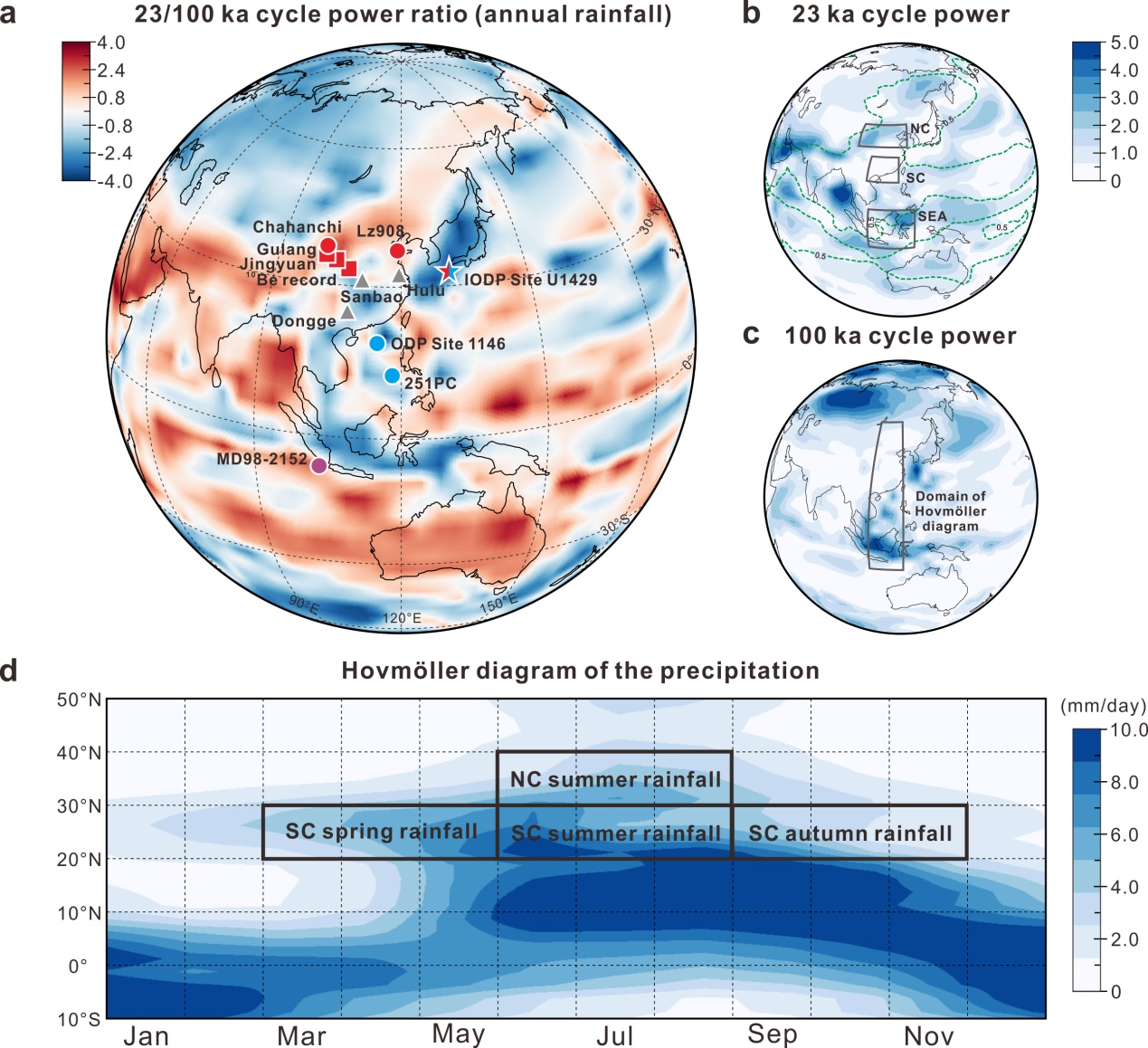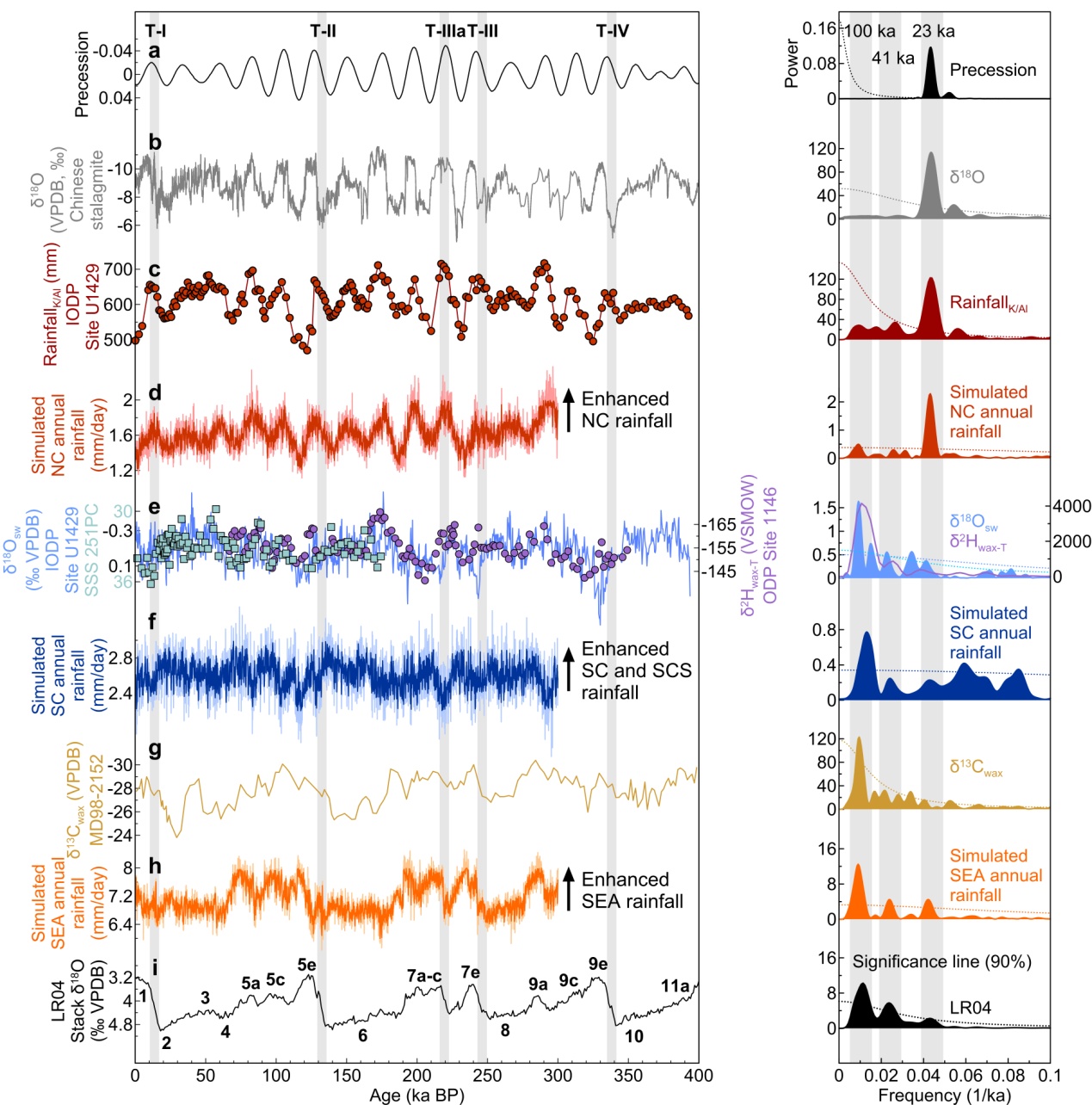For a long time, the cyclicity of Quaternary Asian low-latitude hydroclimate has been attributed to insolation forcing, which is in contrast with dominant ice-sheet and CO2 controls identified in mid-high-latitude regions. However, due to inconsistent reconstruction and simulation, there are disputes about these rainfall variations and forcings.
Recently, the research team led by Prof. WAN Shiming from the Institute of Oceanology of the Chinese Academy of Sciences (IOCAS) and co-researchers from Lund University, Xi'an Jiaotong University and First Institute of Oceanography, Ministry of Natural Resources reported a 400,000-year East Asian rainfall record reconstructed from marine sediment.
The study was published in Communications Earth & Environment on Jan. 4.
Based on the International Ocean Discovery Program (IODP) Site U1429 sediments in the northern Okinawa Trough and the fact that the sediments were mainly supplied from the Yellow River, the weathering-temperature-rainfall model established by the silicate weathering index of the sediments in Yellow River basin was used to reconstruct the rainfall evolution in northern China over the past 400,000 years. Consistent with the simulations, the rainfall record shows strong 20,000-year cycle. By comprehensive comparison, researchers find that changes of rainfall in southern China and west Southeast Asia is dominated by a 100,000-year cycle.
Further research shows that rainfall in northern China mainly occurs in summer, so it is closely related to the change of summer insolation. However, in addition to summer rainfall, spring and autumn rainfall also accounted for a large proportion in southern China. During glacial periods, water vapor convergence in spring and autumn in southern China was enhanced, which made the local annual rainfall exhibits the signal of ice sheet. On the other hand, rainfall in western Southeast Asia was mainly affected by sea level changes related to ice volume changes, so it also showed a strong glacial-interglacial cycle.
"Our results support the theory of precession forcing on East Asian monsoon rainfall evolution, and also highlight the seasonal contributions to orbital-scale of rainfall changes," said ZHAO Debo, first author of the study.
The large proportions of spring and autumn rainfall in southern China indicate that rainfall proxies previously established in this region cannot be simply interpreted as summer rainfall indexes. "Reconstruction of Quaternary summer monsoon based on the rainfall proxies in different regions of East Asia should be cautious in the future works," added Prof. WAN.

Fig. 1 Map showing location of IODP Site U1429, intensity distribution of 20,000-year and 100,000-year cycles of late Quaternary rainfall evolution and spatial variation of modern seasonal precipitation in East Asia

Fig. 2 Comparison of rainfall evolution trends and cycles over northern and southern East Asia and western Southeast Asia over the past 400,000 years
Debo Zhao*, Zhengyao Lu*, Shiming Wan, Hai Cheng, Xuefa Shi, Anchun Li. (2023). Quaternary rainfall variability is governed by insolation in northern China and ice-sheet forcing in the South. Commun Earth Environ, 4, 7.
(Text by ZHAO Debo)
Media Contact:
ZHANG Yiyi
Institute of Oceanology
E-mail: zhangyiyi@qdio.ac.cn
(Editor: ZHANG Yiyi)

